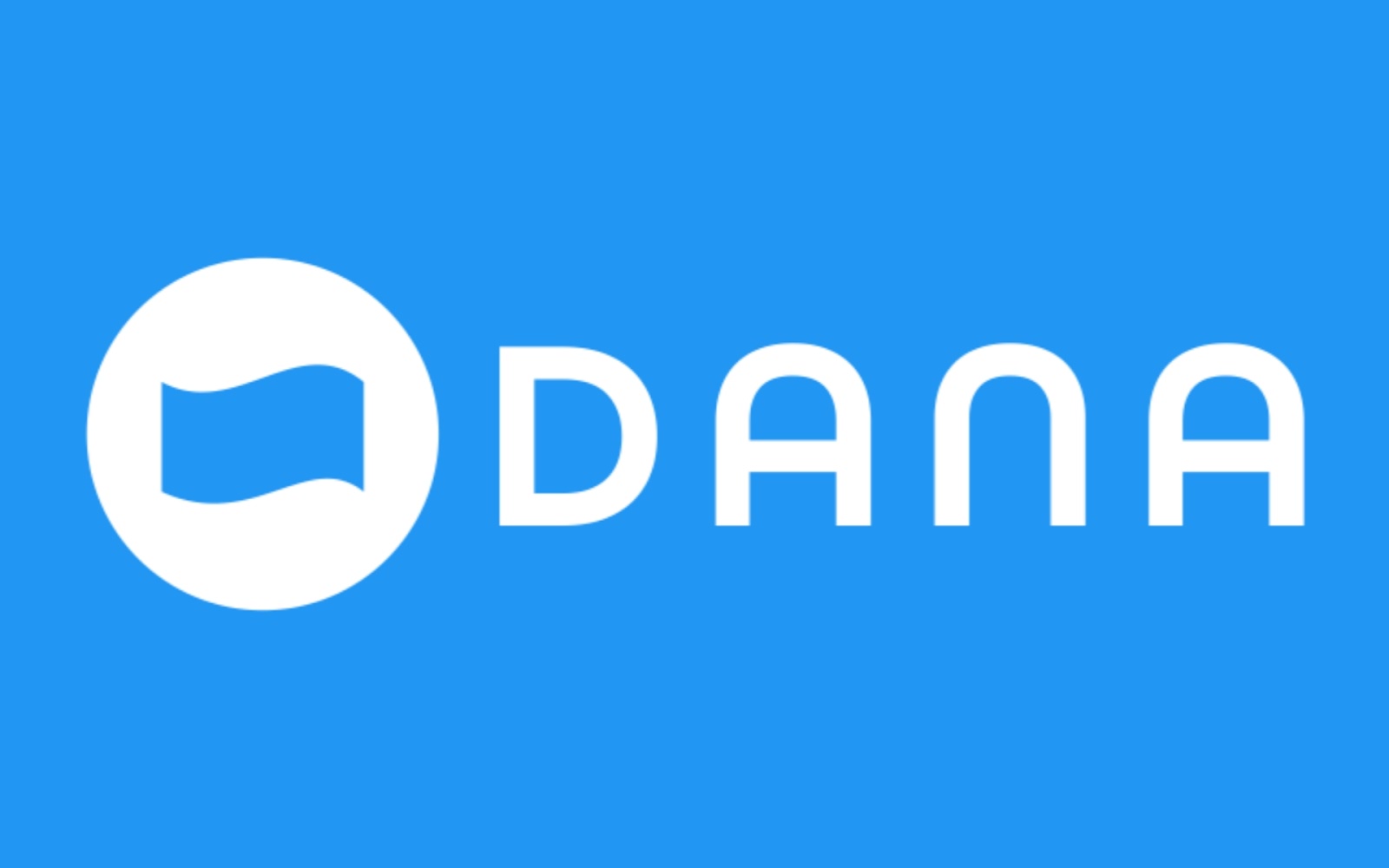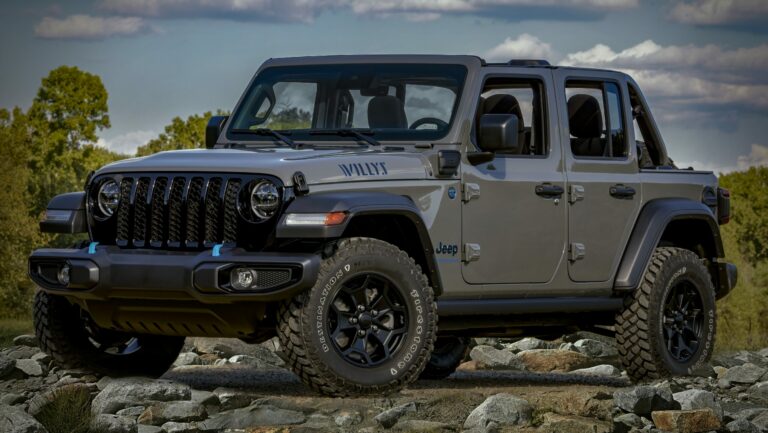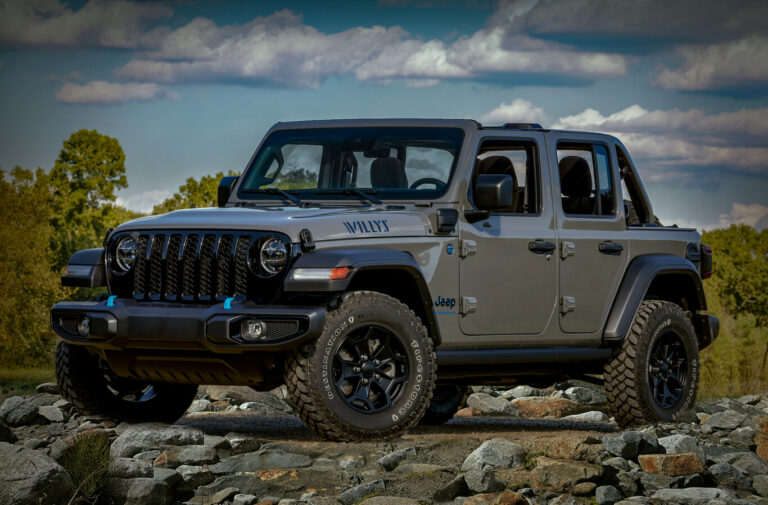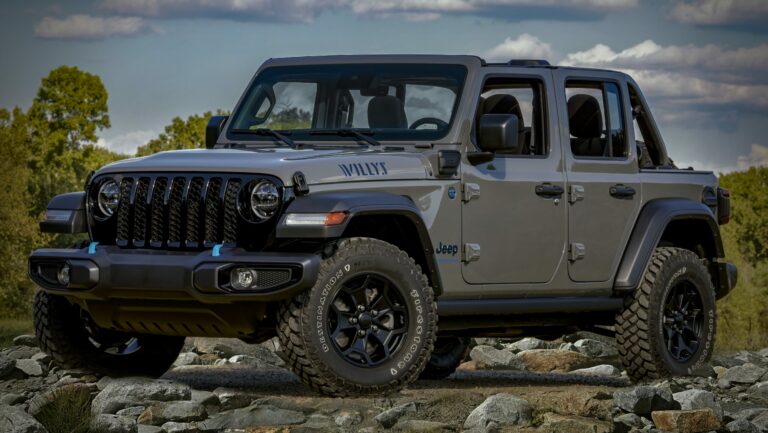Dana 44 Axles For Jeep YJ For Sale: The Ultimate Upgrade Guide
Dana 44 Axles For Jeep YJ For Sale: The Ultimate Upgrade Guide jeeps.truckstrend.com
The Jeep YJ Wrangler, with its iconic square headlights and leaf spring suspension, holds a special place in the hearts of off-road enthusiasts. While beloved for its rugged simplicity and classic looks, the stock axles – typically a Dana 30 in the front and a Dana 35 in the rear – often become the Achilles’ heel for those venturing beyond light trails or looking to run larger tires. This is where the venerable Dana 44 axle enters the scene, offering a significant leap in strength, durability, and performance. For many YJ owners, finding and installing Dana 44 axles is not just an upgrade; it’s a rite of passage, transforming their capable but limited stock rig into a true off-road beast.
This comprehensive guide will delve into everything you need to know about Dana 44 axles for your Jeep YJ, from understanding their benefits and sourcing options to navigating the complexities of installation and budgeting for the project. Whether you’re a seasoned fabricator or contemplating your first major axle swap, this article aims to equip you with the knowledge to make informed decisions and successfully upgrade your YJ’s foundation.
Dana 44 Axles For Jeep YJ For Sale: The Ultimate Upgrade Guide
Why Upgrade to Dana 44 Axles for your Jeep YJ?
The decision to swap out your YJ’s factory axles for Dana 44s is driven by a desire for enhanced capability and peace of mind. Here’s a breakdown of the key benefits:
- Superior Strength and Durability: The most compelling reason is sheer strength. Compared to the Dana 30 and Dana 35, the Dana 44 features a larger ring and pinion gear, stronger axle shafts (typically 30-spline compared to the D35’s 27-spline), and a more robust housing. This significantly reduces the risk of breaking axle shafts, differential components, or bending axle tubes, especially when tackling challenging terrain or running larger tires.
- Larger Tire Compatibility: The stock Dana 30/35 axles are generally limited to 31-32 inch tires, and even then, breakage is a concern. Dana 44s, especially with upgraded chromoly shafts, can comfortably handle 35-inch tires, and often even 37s, opening up a world of new off-road possibilities.
- Wider Gearing and Locker Options: The Dana 44 boasts a far wider range of available gear ratios (from 3.07 to 5.38 and beyond) and aftermarket locker options (selectable, automatic, limited-slip). This allows you to fine-tune your drivetrain for optimal performance with larger tires and gives you superior traction when the going gets tough.
- Enhanced Resale Value: A Jeep YJ equipped with properly installed and geared Dana 44 axles is a highly desirable vehicle in the aftermarket. It signals a serious investment in capability and quality, often fetching a higher resale price than a stock-axle counterpart.
- Peace of Mind on the Trail: Knowing your axles can withstand the punishment of serious off-roading allows you to push your rig harder and tackle obstacles with greater confidence, reducing trail-side repairs and recovery situations.

Understanding Dana 44 Axles: Key Features and Variations
While the "Dana 44" name implies a standard, there’s significant variation depending on the donor vehicle. Understanding these differences is crucial for a successful YJ swap.
- Axle Tube Diameter/Thickness: Most Dana 44s have axle tubes around 2.75 to 3 inches in diameter. Some heavy-duty versions might have thicker tubes.
- Differential Housing: Always cast iron, providing a strong enclosure for the gears.
- Axle Shafts: Typically 30-spline at the differential, which is stronger than the 27-spline of the Dana 35. Aftermarket chromoly shafts are a popular upgrade for extreme use.
- Bolt Patterns: This is a critical consideration. Your YJ has a 5×4.5-inch bolt pattern. Many donor Dana 44s have different patterns (e.g., Ford 5×5.5-inch, GM 6×5.5-inch, Dodge 5×4.5-inch, Jeep TJ/LJ Rubicon 5×4.5-inch). Mismatched bolt patterns will require wheel adapters, re-drilled hubs/shafts, or new custom shafts.
- Widths: Dana 44s come in various widths (wheel mounting surface to wheel mounting surface, WMS-to-WMS).
- Narrow Track (e.g., Jeep Cherokee XJ rear, Scout II front/rear): Around 58-60 inches. These are often a good fit for YJs, sometimes requiring minimal offset wheels or small spacers.
- Wide Track (e.g., Wagoneer front/rear, Ford F-150/Bronco front/rear): Around 62-67 inches. These provide a wider, more stable stance but might require fender trimming or wider flares.
- Jeep TJ/LJ Rubicon D44s: These are highly sought after as they are 5×4.5" bolt pattern and close to YJ width, making them the closest to a "bolt-in" but are also the most expensive used option.
- High Pinion vs. Low Pinion:
- Low Pinion (LP): The pinion gear enters the differential below the centerline of the axle. Common on rear axles and some front axles (e.g., Ford HP Dana 44s are often reversed low pinion). Strong under acceleration.
- High Pinion (HP): The pinion gear enters the differential above the centerline. Found primarily on front axles (e.g., Ford F-150/Bronco Dana 44s, reverse-cut gears). Offers better driveshaft angles on lifted vehicles, reducing vibration, and is stronger under deceleration (the "coast" side of the gears is used for forward motion). For a front axle, a high-pinion Dana 44 is generally preferred for lifted YJs.
- Gearing and Carrier Type: Donor axles will come with whatever gear ratio they had from the factory (e.g., 3.55, 3.73, 4.10). You will likely need to re-gear to match your tire size and engine/transmission combination. They may also come with an open differential, limited-slip, or in rare cases, a factory locker.
Sourcing Dana 44 Axles for your Jeep YJ: Where to Look
Finding the right Dana 44s is the first major step. Your options range from budget-friendly to turn-key expensive.
- Junkyards/Salvage Yards: The most cost-effective option. You’ll find a variety of donor vehicles. Be prepared to inspect them thoroughly for damage, rust, or bent tubes.
- Common Donor Vehicles (Front D44): 1970s Ford F-150/Bronco (high pinion, driver’s drop), Jeep Wagoneer/Grand Wagoneer (driver’s drop), Scout II (passenger drop, but can be flipped for a YJ).
- Common Donor Vehicles (Rear D44): Jeep Cherokee XJ (some models had D44, particularly with towing package, rare but good fit), Jeep Grand Cherokee ZJ (some V8 models had D44a, an aluminum housing which is weaker than cast iron D44, avoid for serious off-roading), Ford F-150/Bronco, Scout II, International Harvester.
- Jeep TJ/LJ Rubicon: While technically Dana 44s, these are typically very expensive due to their direct fit and desired features. They are the closest to a "bolt-in" option.
- Online Marketplaces: Craigslist, Facebook Marketplace, dedicated Jeep forums (e.g., JeepForum, Pirate4x4, local 4×4 groups). You can often find axles from private sellers who have already pulled them or even partially prepped them.
- Specialized Off-Road Shops: Many shops sell used, reconditioned, or even custom-built Dana 44s. These will be more expensive but offer peace of mind regarding condition and often come with new gears, lockers, and even suspension mounts already welded on.
- New Crate Axles: Companies like Currie Enterprises, Dynatrac, and G2 Gear & Axle offer brand-new, complete Dana 44 axles that are built to specific specifications (e.g., YJ width, correct bolt pattern, desired gearing, and lockers). These are the most expensive but offer a true bolt-in solution with maximum strength and warranty.
Important Considerations Before Purchasing
Before handing over your cash, carefully consider these factors:
- Condition Assessment: Inspect for excessive rust, bent tubes (check with a straight edge), damaged differential covers, and signs of leaks. Ask about the vehicle’s history if possible.
- Gearing Match: If you’re swapping both front and rear axles, ensure they have the same gear ratio. If not, budget for a re-gear.
- Bolt Pattern Compatibility: Decide if you’ll use wheel adapters (adds width, another point of failure), have shafts re-drilled, or buy new custom shafts to match your 5×4.5" YJ wheels.
- Width Discrepancy: A wider stance can be beneficial for stability but might require fender flares or trimming to prevent tire rubbing.
- High Pinion vs. Low Pinion (Front): For a lifted YJ, a high-pinion front Dana 44 (e.g., from a Ford F-150/Bronco) is highly recommended for better driveshaft angles and strength.
- Steering and Suspension Compatibility: Donor axles will NOT have the correct spring perches, shock mounts, track bar mounts, or control arm mounts for your YJ. These will need to be cut off and new YJ-specific mounts welded on. This is a critical fabrication step.
- Brake System: Donor axles will come with their own brake systems. You’ll need to adapt these to your YJ’s master cylinder and brake lines, or upgrade to a disc brake conversion kit if the donor axle had drums.
- Driveshaft Lengths: Swapping axles almost always requires new, custom-length driveshafts, often with stronger U-joints (e.g., 1310 or 1350 series).
- Budget: Be realistic. The cost of the axles themselves is often just the beginning. Factor in re-gearing, lockers, new shafts, brake components, driveshafts, suspension mounts, and potentially professional welding and installation labor.
The Installation Process: A High-Level Guide
Swapping axles is a significant undertaking that requires mechanical aptitude, proper tools, and often, welding skills. If you’re not comfortable with welding, hire a qualified fabricator.
- Removal of Stock Axles: Safely support your YJ on jack stands. Disconnect shocks, brake lines, driveshafts, spring U-bolts, and steering linkage. Remove the old axles.
- Prep Donor Axles: Thoroughly clean the donor axles. Inspect all components. This is the ideal time to replace old bearings, seals, and ball joints. If you’re changing gear ratios or adding a locker, this work should be done by an experienced differential shop.
- Fabrication/Welding: This is the most crucial step. All old brackets must be ground off the donor axles. New YJ-specific spring perches, shock mounts, track bar mounts (if applicable), and sway bar mounts must be precisely positioned and welded onto the new axles. This ensures proper suspension geometry and alignment. Precision is key here; incorrect placement can lead to severe handling issues or failure.
- Install Axles: Carefully position the new axles under the YJ, aligning them with the leaf springs (or control arms if doing a link swap). Bolt up the U-bolts, shocks, and initial steering components.
- Brake Lines and E-Brake: Connect the brake lines to the new calipers/wheel cylinders. Bleed the entire brake system thoroughly. If the donor axle had a different e-brake setup, you’ll need to adapt or replace cables.
- Driveshafts: Measure for custom driveshafts. Many choose to upgrade to a slip yoke eliminator (SYE) on the transfer case at this time, especially with lifted YJs, to improve driveline angles and prevent vibrations.
- Steering Linkage: Verify that your steering linkage (tie rod, drag link) is compatible with the new axle’s knuckles. You may need to upgrade to a stronger, aftermarket steering system.
- Final Checks and Testing: Double-check all nuts, bolts, and connections. Cycle the suspension to ensure no binding. Bleed the brakes again. Perform a test drive, starting slowly, listening for unusual noises, and checking brake performance and steering. Gradually increase speed and test off-road capability.
Common Challenges and Solutions
- Rust/Wear on Donor Axles: Solution: Thorough inspection before buying. Budget for a rebuild kit (bearings, seals, ball joints) if necessary.
- Incorrect Gearing: Solution: Budget for a professional re-gear. This is essential for proper performance and preventing drivetrain strain.
- Bolt Pattern Mismatch: Solution: Wheel adapters (check for quality, ensure proper hubcentric fit), re-drill hubs/shafts (requires specialized machining), or new custom axle shafts (most expensive but strongest).
- Width Mismatch: Solution: Choose a donor axle closer to YJ width, use custom wheels with appropriate backspacing, or embrace the wider stance with fender trimming/flares.
- Welding/Fabrication: Solution: If you lack the skills, hire a reputable off-road fabrication shop. This is not an area to cut corners.
- Budget Overruns: Solution: Create a detailed budget including all potential parts and labor. Add a 10-20% contingency fund for unexpected issues.
Price Guide for Dana 44 Axles for Jeep YJ
The cost of a Dana 44 swap can vary wildly depending on the condition of the donor axles, the extent of the rebuild, whether you do the work yourself, and if you opt for new components. Here’s an estimated price guide:
| Item | Description | Estimated Price Range (USD) | Notes |
|---|---|---|---|
| Used Donor Axles (Bare) | Pulled from a junkyard vehicle, as-is | Requires full rebuild, re-gearing, and installation parts. | |
| Front Dana 44 (e.g., Wagoneer, Ford) | Varies by condition and demand | $300 – $800 | High Pinion (HP) often on higher end. Driver’s drop preferred. |
| Rear Dana 44 (e.g., XJ, Scout) | Varies by condition and demand | $200 – $700 | Avoid Dana 44a (aluminum housing). |
| Used Rebuilt/Ready-to-Install | Axles inspected, cleaned, often with new seals/bearings, possibly geared/locked | Significant savings on labor if buying prepped. | |
| Front Dana 44 (Rebuilt, Geared) | Price depends on gearing, locker, and condition | $1,500 – $3,000 | May include new shafts, knuckles. |
| Rear Dana 44 (Rebuilt, Geared) | Price depends on gearing, locker, and condition | $1,200 – $2,500 | |
| New Crate Axles | Brand new, custom-built for YJ, complete with gearing/locker | Bolt-in solution, highest quality, warranty. | |
| Front Dana 44 (Bolt-in, Complete) | Currie, Dynatrac, G2, etc. | $3,500 – $6,000+ | Can go higher with extreme duty options. |
| Rear Dana 44 (Bolt-in, Complete) | Currie, Dynatrac, G2, etc. | $3,000 – $5,500+ | |
| Additional Costs (Estimates) | These are crucial add-ons for a complete swap | ||
| Regearing (Parts & Labor, per axle) | Ring & Pinion, master install kit, professional setup | $500 – $1,000 | Essential if donor gears don’t match or aren’t desired ratio. |
| Locker (Parts & Labor, per axle) | ARB, Eaton, Detroit, etc. (parts only $300-$1000+) | $600 – $1,200 | Installation labor included in regearing cost if done at same time. |
| Custom Driveshafts (each) | Front and/or Rear, often with stronger U-joints | $300 – $600 | May also need Slip Yoke Eliminator (SYE) for transfer case ($250-$500). |
| Brake Components | Calipers, rotors, pads, lines, proportioning valve | $200 – $500 | Varies based on donor brakes vs. disc conversion. |
| Suspension Mounts/Perches | Spring perches, shock mounts, track bar mounts, U-bolt plates | $100 – $300 | Aftermarket kits available. |
| Professional Installation Labor | Axle prep, cutting/welding mounts, final assembly | $1,000 – $3,000+ | Highly variable based on shop rates and complexity. |
| Total Estimated Cost (DIY/Budget) | Used bare axles, some DIY, professional re-gear/weld | $2,500 – $5,000+ | For a pair of D44s, geared, with basic install. |
| Total Estimated Cost (Shop Installed) | Used/rebuilt axles, professional installation, new components | $5,000 – $10,000+ | For a complete swap, including lockers and quality components. |
| Total Estimated Cost (New Crate) | Buying new bolt-in axles and professional installation | $8,000 – $15,000+ | The most expensive, but least hassle, highest quality option. |
Note: Prices are estimates and can vary significantly based on location, availability, brand, and labor rates.
Frequently Asked Questions (FAQ)
Q: Are Dana 44s a direct bolt-in for a YJ?
A: No, not typically. While Jeep TJ/LJ Rubicon Dana 44s are the closest in terms of bolt pattern and width, they still require new spring perches and shock mounts welded on to fit a YJ’s leaf spring suspension. Most other donor Dana 44s require significant fabrication, including cutting off old mounts and welding on new YJ-specific ones.
Q: What donor vehicles have Dana 44s that work well for a YJ?
A: For the front, common choices are Ford F-150/Bronco (1978-79 high pinion, driver’s drop) and Jeep Wagoneer/Grand Wagoneer (driver’s drop). For the rear, look for Jeep Cherokee XJ (some rare models), Scout II, or even some Ford F-150s.
Q: Do I need to upgrade both front and rear Dana 44s?
A: It’s highly recommended. If you only upgrade one axle, the weaker stock axle will become the new limiting factor, especially if you plan on running larger tires or a locker in the upgraded axle. For optimal performance and reliability, a matched set of Dana 44s is ideal.
Q: Can I run 35-inch tires with stock axles?
A: You can, but it’s not recommended for off-roading. The stock Dana 30 front and especially the Dana 35 rear are very prone to breakage with tires larger than 31-32 inches, particularly if you use a locker or encounter challenging terrain.
Q: What’s the difference between high pinion and low pinion?
A: High pinion (HP) axles have the pinion gear mounted higher on the differential housing. This provides a better driveshaft angle on lifted vehicles, reducing vibrations and increasing strength when driving forward (as the gears are operating on their stronger "coast" side). Low pinion (LP) axles have the pinion lower and are stronger under acceleration. For a front axle on a lifted YJ, HP is generally preferred.
Q: How much does a Dana 44 swap typically cost?
A: A budget DIY swap using used axles and doing most of the labor yourself might be $2,500 – $5,000+. A professional shop installation using quality rebuilt axles can easily be $5,000 – $10,000+. New crate axles installed can push the cost to $8,000 – $15,000+.
Q: Is it worth doing the swap myself?
A: If you have significant mechanical experience, welding skills, and the necessary tools, it can be a rewarding and cost-saving project. However, if you’re unsure about any aspect, especially welding and differential setup, it’s best to consult or hire professionals to ensure safety and proper functionality.
Q: What is the optimal gear ratio for 35-inch tires with a Dana 44?
A: For a YJ with 35-inch tires and a 4.0L engine, common optimal gear ratios are 4.56 or 4.88, depending on your transmission (manual vs. automatic) and driving style (more highway vs. more off-road). For the 2.5L engine, even lower gears like 5.13 or 5.38 might be considered.
Conclusion
Upgrading your Jeep YJ with Dana 44 axles is a transformative modification that unlocks a new level of off-road capability and reliability. It’s a significant investment in time, effort, and money, but one that pays dividends in performance, peace of mind, and even resale value.
The journey from sourcing used axles in a junkyard to seeing your YJ conquer obstacles it once struggled with is incredibly rewarding. Success hinges on thorough research, careful planning, realistic budgeting, and a commitment to quality workmanship, whether you’re tackling the project yourself or entrusting it to professionals. With the right Dana 44s under your YJ, you’ll be ready to tackle tougher trails and explore more challenging terrain, truly living up to the Jeep spirit.



